Shoply Review: Terry LaCore owned “decentalized commerce”
 Shoply came across my desk back in late June. At the time the company was running a “The Last Dance” prelaunch.
Shoply came across my desk back in late June. At the time the company was running a “The Last Dance” prelaunch.
Since then Shoply as a company name has been revealed, and Shoply has been set up on the domain “shoply.com”.
Shoply’s domain, an old 2003 domain privately renewed on March 3rd, 2024, is currently an August 15th launch placeholder:
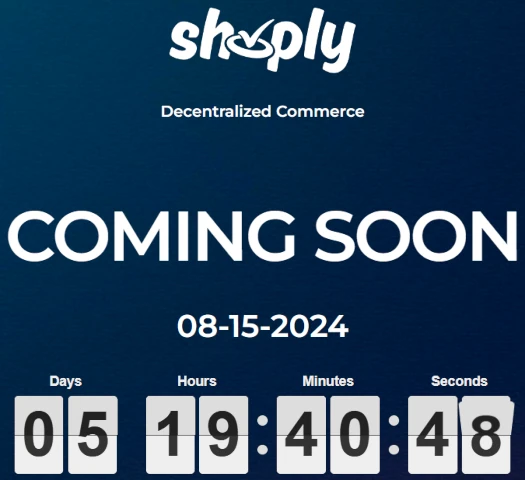
Shoply itself is a LaCore Enterprises company owned solely by Terry LaCore.
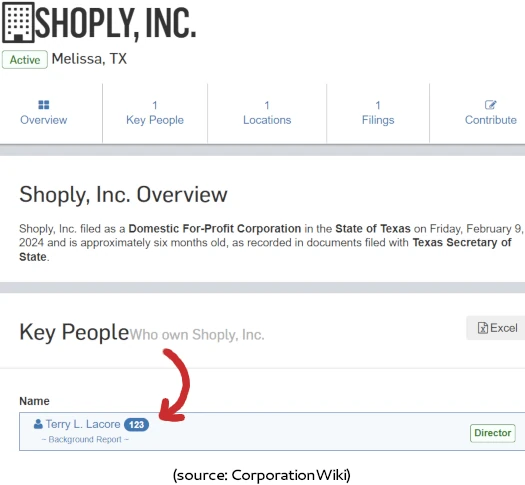
 As with most LaCore Enterprises companies, LaCore (right) isn’t fronting Shoply.
As with most LaCore Enterprises companies, LaCore (right) isn’t fronting Shoply.
Confirmed names attached to Shoply include Nick Sarnicola, Rod Larsen and Ron Williams.
Nick Sarnicola is best known in the MLM industry as one of the co-founders of Visalus.
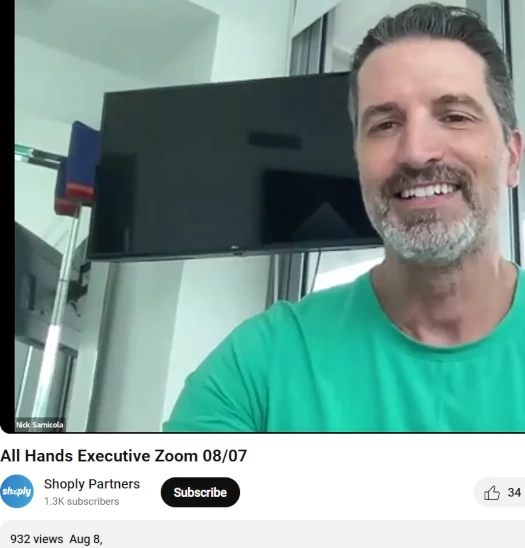
- in 2013 Visalus was accused of orchestrating an espionage campaign against Ocean Avenue, following the departure of several high-profile Visalus distributors
- in 2015 Visalus’ alleged espionage campaign led to indictments and arrests
- in July 2017 Visalus was sued for allegedly running a secret Amazon retail racket, placing the company in direct competition with its distributors
- in August 2017 Visalus was sued for allegedly screwing founding distributors out of promised share dividends
In 2019 what was left of Visalus was quietly sold off to Pruvit, another LaCore Enterprises company.
Rod Larsen made a name for himself in the MLM industry as the CEO of Zija. Zija was sold off to Isagenix in 2020.
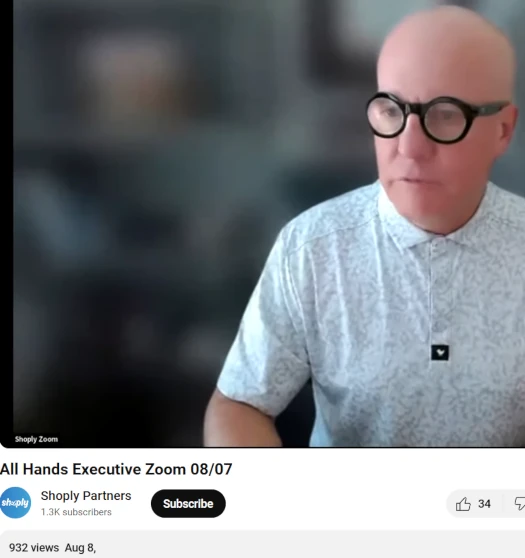
In 2021 Larsen was appointed Chief Operating Officer at Jeunesse. Jeunesse was sold off to LaCore Enterprises in January 2023.
Ron Williams started his MLM executive career off with Brain Garden in 1998.
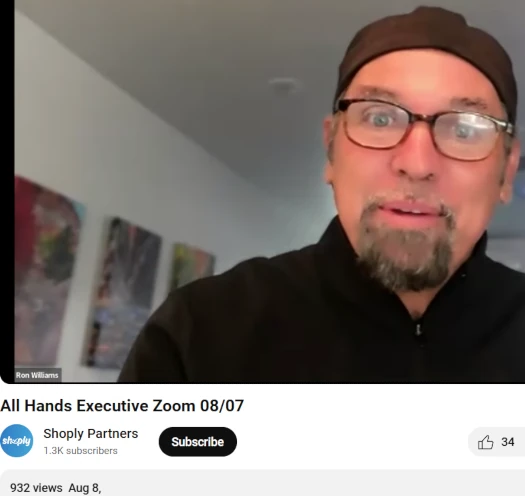
The company was sold a few years later with Williams going on to launch ForeverGreen in 2004.
- in 2015 LaCore Enterprises, through Pruvit, sued ForeverGreen for breach of contract and fraud
- Williams resigned as CEO and President of ForeverGreen in 2017
- in 2018 LaCore Enterprises rebooted its Foru International acquisition as Uforia Science, Ron Williams was appointed CEO
- Williams appears to have left Uforia Science after a failed 2020 merger with MaVie
- in August 2021 Williams resurfaced as the President of SuperDraft Pro
- in July 2022 Williams resurfaced again, this time as CEO of LaCore Enterprises’ PlayCare Health
Terry LaCore and LaCore Enterprises are based out of Texas in the US.
As always, if an MLM company is not openly upfront about who is running or owns it, think long and hard about joining and/or handing over any money.
Shoply’s Products
Shoply technically doesn’t have any retailable products or services.
Shoply sells access to an ecommerce platform, on which third-party vendors can list and sell products.
These products are commissionable and are paid out through Shoply’s compensation plan, but strictly speaking aren’t Shoply’s products.
Pricing to become a Shoply vendor is
- Domestic Vendor – $999 and then $79 a month
- International Vendor – $1499 and then $99 a month
The only notable difference between the two options is who a vendor can sell their products to.
Shoply’s Compensation Plan
Shoply’s compensation plan pays on ecommerce platform product sales, and fees paid by Shoply affiliates and vendors.
Shoply Affiliate Ranks
There are sixteen affiliate ranks within Shoply’s compensation plan.
Along with their respective qualification criteria, they are as follows:
- Catalyst – not disclosed
- T1 – generate 1000 GV
- T2 – generate 2000 GV
- T3 – generate 4000 GV
- Mic1 – generate 7000 GV
- Mic2 – generate 10,000 GV
- Mic3 – generate 15,000 GV
- Mac1 – generate 25,000 GV
- Mac2 – generate 50,000 GV
- Mac3 – generate 100,000 GV
- D1 – generate 150,000 GV
- D2 – generate 250,000 GV
- D3 – generate 500,000 GV
- G1 – generate 1,000,000 GV
- G2 – generate 1,500,000 GV
- G3 – generate 2,000,000 GV
GV stands for “Group Volume”. GV is sales volume generated by Shoply affiliate and their downline.
Note that Shoply excludes retail volume from GV calculations. Shoply calculates GV as commissions paid out by an ecommerce vendor multiplied by two.
MLM Commission Qualification
Shoply affiliates need to generate and maintain 100 PV a month to qualify for MLM commissions.
PV stands for “Personal Volume”. PV is sales volume generated by retail sales and a Shoply affiliate’s own orders.
Recruitment Commissions
Shoply pays commissions on recruitment of affiliates.
Recruitment commissions are determined by how much a Shoply affiliate pays in fees:
- Influencer ($499) tier affiliates earn a 15% recruitment commission
- Influencer Pro and above ($799-$1499) tier affiliates earn a 20% recruitment commission
Marketplace Commissions
Shoply affiliates earn a commission on the sale of products through its Marketplace.
80% of the set Marketplace commission is paid to the affiliate who made the sale.
Note that Marketplace commission rates are determined by the vendor whose product was sold.
Residual Marketplace Commissions
Shoply pays residual Marketplace commissions via a unilevel compensation structure.
A unilevel compensation structure places an affiliate at the top of a unilevel team, with every personally recruited affiliate placed directly under them (level 1):

If any level 1 affiliates recruit new affiliates, they are placed on level 2 of the original affiliate’s unilevel team.
If any level 2 affiliates recruit new affiliates, they are placed on level 3 and so on and so forth down a theoretical infinite number of levels.
Residual Marketplace commissions are set by vendors. Whatever percentage this is, is then split further across five unilevel team levels as residual commissions.
Note that at time of publication Shoply does not disclose specific residual commission rates across the five available unilevel team levels.
Infinity Payout
The Infinity Payout allows a Shoply affiliate to earn beyond their first five unilevel team levels.
Infinity Payout is paid as 2% to 15% depending on rank (specifics aren’t disclosed at time of publication).
Marketplace Pool
Shoply sets aside an undisclosed percentage of company-wide Marketplace transactions.
This undisclosed percentage is paid into the Marketplace Pool, which is split among the top six affiliate ranks.
Influencer Pro Business Development Bonus
Shoply affiliates who bought in at the Influencer Pro tier, and agree not to spam companies to get them to sign up, are able to earn a 3% bonus on sales volume generated by recruited Domestic Vendors and International Vendors.
Influencer Pro Business Development Check Match
Shoply affiliates who bought in at the Influencer Pro tier, and agree not to spam companies to get them to sign up, are able to earn a 17% to 45% match on Vendor tier affiliate earnings across their downline.
The exact percentage is based on rank but specifics aren’t disclosed.
Community Bonus
The Community Bonus is a 3×12 matrix that fills on company-wide recruitment.
A 3×12 matrix places an affiliate at the top of a matrix, with three positions directly under them:
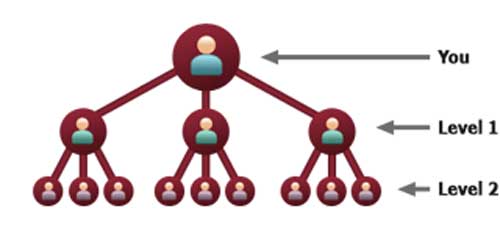
The second level of the matrix is generated by splitting these first three positions into another three positions each (nine positions).
Levels three to twelve are generated in the same manner, with each new level housing three times as many positions as the previous level.
As stated the Community Bonus matrix fills company-wide, meaning those who sign up earlier benefit the most on subsequent recruitment.
The Community Bonus is paid on fees paid by affiliates recruited into the matrix.
- Catalyst ranked affiliates can earn up to $500 a month through the Community Bonus
- T1 ranked affiliates can earn up to $1000 a month through the Community Bonus
- T2 ranked affiliates can earn up to $2000 a month through the Community Bonus
- T3 ranked affiliates can earn up to $4000 a month through the Community Bonus
- Mic1 ranked affiliates can earn up to $7000 a month through the Community Bonus
- Mic2 ranked affiliates can earn up to $10,000 a month through the Community Bonus
- Mic3 ranked affiliates can earn up to $15,000 a month through the Community Bonus
- Mac1 ranked affiliates can earn up to $25,000 a month through the Community Bonus
- Mac2 ranked affiliates can earn up to $50,000 a month through the Community Bonus
- Mac3 ranked affiliates can earn up to $100,000 a month through the Community Bonus
- D1 and higher ranked affiliates have no Community Bonus cap
Community Check Match Bonus
A Check Match Bonus is paid on the Community Bonus earned by personally recruited affiliates.
Joining Shoply
Shoply affiliate membership is priced across five tiers:
- Affiliate – $9 a month
- Influencer – $499 and then $29 a month
- Influencer Pro – $799 and then $39 a month
- Domestic Vendor – $999 and then $79 a month
- International Vendor – $1499 and then $99 a month
The more an affiliate pays in fees the higher their income potential through Shoply’s compensation plan.
Shoply Conclusion
Shoply’s marketing schtick is “decentralized commerce”:
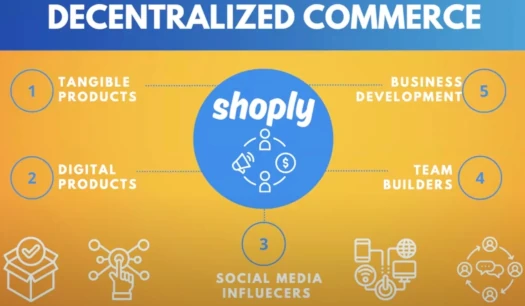
Pretending Shoply is decentralized when it’s owned by one person is dishonest.
LaCore Enterprises owns Shoply’s ecommerce platform. LaCore Enterprises dictates who has access and what can and can’t be sold on the platform.
To be clear I don’t have a problem with LaCore Enterprises owning an MLM ecommerce platform, my issue is with Shoply’s deceptive “decentralized” marketing.
Moving on to Shoply’s compensation plan, it’s pretty obvious the focus is recruitment and commissions paid out on said recruitment.
In a July 30th official compensation plan presentation, Nick Sarnicola advises that Shoply affiliates are penalized for making retail sales;
Because we can sell so many different things in the platform, if you sell a watch for $5000, we can’t let that count, the $5000, towards organizational volume (GV), because you would jump ranks off hollow volume.
So retail volume we can’t do because it’ll be too easy to hit the ranks and nobody would be making any money.
Shoply affiliates can make retail sales, but they’re financially incentivized to not do so.
That leaves recruitment, which lends itself to the majority of Shoply affiliates earning off of monthly recurring fee payments.
Monthly minimum PV requirements would see Shoply affiliates make a token purchase on the ecommerce platform. And if this dwarfs retail spending on the platform, Shoply would be operating as a pyramid scheme.
I didn’t see anything in Shoply’s compensation plan to discourage this or incentivize retail. As per the penalization example above, to the contrary.

Another troubling aspect of Shoply’s compensation plan is “pay to play”. Between “Influencer” and “Influencer Pro”, we have recruited affiliates paying more for no other reason than income potential.
To quote Nick Sarnicola again;
I strongly, strongly, strongly, strongly, strongly, strongly, strongly recommend you don’t be soft with people and let ’em be an Influencer. I’m tellin’ ya it’s not going to be conducive for them.
They’re gonna be mad at you that you didn’t push harder for them just to pay the difference. Because the distinction between what is earning potential is massive.
“Pay to play” is another indicator of an MLM pyramid scheme.
The concept of an MLM ecommerce platform is nothing new. I suppose this is LaCore Enterprises trying to create an MLM competitor to Amazon and the likes.
My question is why would third-party vendors bother with Shoply? The only financial incentive I can see is to perhaps hope to profit of a captive audience buying a product each month hoping to earn on recruitment.
That’s of course a pyramid scheme and, at least personally, probably not something worth risking the otherwise good name of your business over.
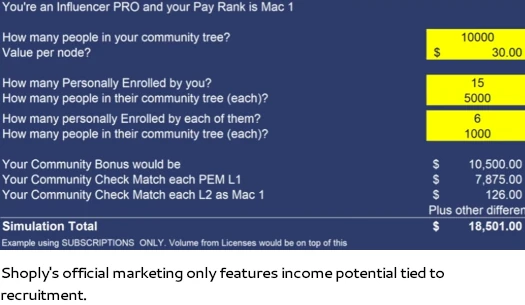
I considered whether Shoply might plan to target MLM companies. Logistically though, how would that work?
If the MLM company starts selling on Shoply they’re in direct competition with their affiliates/distributors.
If MLM company affiliates/distributors start listing on Shoply then you’re going to wind up with a bunch of duplicate product listings.
Pricing is another potential issue as MLM companies are notorious for keeping tight control on where and how products can be sold and for how much.
Shoply’s ecommerce platform not making much sense outside of being attached to a probably pyramid scheme might be by design.
For a third time, we again turn to Nick Sarnicola;
We have the right compensation driving the right behavior … What is that behavior?
You better get your ass in now, because I’mma sign up ten this week. This is the non-public side of this, this is just me and you. Me and my buddy.
Get your ass in now because these ten are either going in your community or somebody else’s. Or you’re going in theirs.
From Shoply’s business model to how it’s being marketed by its executives, recruitment very much seems to be the core focus of the company.
LaCore Enterprises has a history of launching either well-rounded retail focused companies, or pyramid recruitment flops. As it stands Shoply appears to fall square into the latter category.
As with all MLM pyramid schemes, once affiliate recruitment dries up so too will commissions.
This will see those at the bottom of the pyramid stop paying fees. This in turn will see those above them stop getting paid.
Unless new recruits are found, these affiliates stop paying fees meaning those above them also stop getting paid.
Once enough affiliates stop paying fees, an irreversible collapse is triggered.
Math guarantees the majority of participants in pyramid schemes lose money.


I watched the pre launch and comp plan videos. Convoluted mess.
A business makes an offer for an influencer to sell a product. It’s split between the person who brought that influencer on. The sale spiffs 15% to Shoply. And the vendor pays $99 a month. Who can afford that?
On one video Nick admits there is no benefit to customer buying on shoply vs Amazon. Nick says to get residual you build a team and figure out what product to put on auto ship.
And Rod says China teaches influencers in school, a debunked one time training by a beauty company.
The WSJ says people are losing faith in influencers. I don’t get it. Build a team. Find a vendor. Hope an influencer sells.
My take was it’s a lot of sugar coating on the old autoship recruitment pyramid model.
Reason it doesn’t make sense is like you pointed out, why would retail customers bother?
Another very hyped shopping concept after Wiesner’s Shopwithme.
Actually, the only thing that matters is that partners buy packages and subscribe to use the platform. As said, the bigger the package and the subscription, the more you pay, so pay to play.
The money is not made by selling products, it is made by selling the dream or the air that all these concepts will become the new Temu Alibaba Amazon Ebay etc.
All the jumpers will certainly be there to feed the program and calculate how much they will earn if everyone in their team activates at the launch.
Terry La Core will certainly make enough money to buy some more MLM companies in the near future and add them to his list.
Isn’t that the way the Wolves of Wall Street operate? You buy 20 companies hoping that 2 or 3 will make it big and you drive the others into the abyss, as soon as you think it won’t happen there, the support stops? Or you sell them to someone else who thinks that by filling the financial hole they can get positive figures again.
I have never understood why people start in a business as a distributor where they are not the first and only priority for the owner. What is the message that you ultimately bring?
Knew Ron well and was one of the 1st distributors in 4 ever green and man did he screw us all bad.
I sure wish the govt would make all mlms illegal and throw all these scum bellys in prison…
Total pay to play compensation plan.
The ‘did it before, going to do it again’ posts are flying high on social media today as Nick is pushing everyone to ‘lock in’ 10 more before August 15. History – does that not matter to those blindly joining?
I had someone say forget equity – that is in the past. But lying about equity, Amazon, secret back room deals, and allegedly moving lines to make fake ranks should matter. The rumors of behavior with downlines etc. should matter.
With all the hype – my bet is this is a way for Terry LaCore to sell more of his products to more people (he now has a great email list from the effort) vs. giving control back to the average person.
Customers don’t join until September. Only a select few vendors before September. And Nick saying they don’t want the Amazon vendors – they want the Etsy vendors – the mom and pop candle company – which would not be able to keep up with ‘hundreds of thousands’ of influencers as promised.
It will be a matter of time before the smart ones can say “Told U So”.
I dont know much about it other than they are pushing people very hard to sign up now and get the details later.
Seems an odd way to do things, but very much pressuring people to get signed up ASAP or risk losing your spot and thousands of dollars.
a friend said that there is also no pdfs, documents or website for people to refer to for info. He emailed Customer services Tuesday, with no luck of a reply.
He said that if he was to invest $500, he did not know what to do next month, other than pay $38 Subscription, to actually see returns in his business.
could this just be another big American hype thing, guys?
I think you already know the answer if your friend has pitched you on $500 and then $38 a month on nothing more than vague income promises.
Thanks Oz. Your investigative nature of all things dodge has saved many from ultimate loss and heartache over the years.
It’s just a bunch of upline leaders not practicing what they preach about doing one opportunity.
Their dinosaur MLM companies are not earning them any real income anymore so they’re trying to capitalize on their current downline in a new money grab trash program. Another Zbucks.
Curious – is this the same shoply from 2010 -?
news.ycombinator.com/item?id=1615206
appvita.com/2010/10/16/shoply-make-your-own-online-store/
Sounds the same. Plus with all the different Shoply posts prior to their inception, could it be an acquired company?
Shoply the MLM company was only incorporated in Feb 2024. It’s a common enough name.
This is a failed model from the beginning. They are missing the Value component of using Shoply vs Amazon.
People love Amazon and will not change their habits unless there is some substantial value.
Recruiting is where any momentum will come from, but that will be short lived. As a vendor, I don’t see any this as a valuable marketplace to sell products. Its not established, the site is hard to find, and there is an upfront fee for an empty mall.
This is also a great start to your business you go to the site and see this.
This was tried back in the 90s called Webmall, and it failed miserably.
as someone who took a critical look at this sht show, here is what I gleaned.
yup a big part of it.. lacores failing crap MLMs have been funneled to one location.
He, nick and the others are looking for a way to offload the remainder of their BS “products”.
so they create this conglomeration of MLM scam to do it.
they have convinced thousands of people to pay 800 bucks and 50 bucks a month Plus make them buy x amount of ” products” to stay in the game… to, well pay lacore to purchase his old stock that he cannot sell anymore.
all the other incestuous MLMers around lacore jumped at this as well.. an opportunity to get people to pay you to buy your crap products that won’t sell.. how could you go wrong?!!
I do hope those involved in this scam are enjoying their forced purchases of lipstick, hair cream, skin lotion and fake shakes. because that will be the extent of their enjoyment from this ripoff.
funny.. the concept is somewhat valid, done in an actual business method could have had a chance. These jokers know nothing other than scammy MLM bullturds so that is the convoluted angle they took.
none of them know what legitimate business is.
Hell the SEC forbade lacore from even holding an official title as a managing member of any business for 5 years, after his 50k fine and stay out of jail card.
crooks and clowns .. the lot of em.
For all the hype – they put the pretty much defunct Elomir on the site. You can buy the ‘strips’ for less than Elomir sold them for. And you can buy Vi Shakes for more than you can pay for them on Amazon… and not earn a ton $61 shake pays only 37 PV, 15 DB (bonus) and 7 CV to the Affiliate selling it, and 37 QV, 3.50 DB and 30 CV to the influencer pro?
Seems to be as others stated – a Terry LaCore conglomerate of inventory. Revolutionary? Decentralized?